

 Brief History
Research Topics
Lecture
Link
Japanese Page
Brief History
Research Topics
Lecture
Link
Japanese Page
   Brief History
Research Topics
Lecture
Link
Japanese Page
Brief History
Research Topics
Lecture
Link
Japanese Page
|
(Apr. 2025) |
Welcome to MK's page !!
Mao Kurumatani

(Drawn by a portrait painter in Minneapolis, USA, 2011)

Ibaraki University
Graduate School of Science and Engineering
Department of Urban and Civil Engineering
Professor

Computational Mechanics, Applied Mechanics, Computer Simulation

mao.kurumatani.jp(a)vc.ibaraki.ac.jp

Hitachi Campus, S3-2F (W-203),
4-12-1, Nakanarusawa, Hitachi, Ibaraki 316-8511, Japan
B. Eng., Civil Engineering, Tohoku University, Japan, March 2002
M. Eng., Civil Engineering, Tohoku University, Japan, March 2004
D. Eng., Civil Engineering, Tohoku University, Japan, March 2007

JSPS (Japan Society for the Promotion of Science) Research Fellow, April 2007 - March 2009
Assistant Professor, Graduate School of Engineering, Tohoku University, April 2009 - March 2010
Assistant Professor, Department of Urban and Civil Engineering, Ibaraki University, April 2010 - March 2011
Lecturer, Department of Urban and Civil Engineering, Ibaraki University, April 2011 - March 2014
Associate Professor, Department of Urban and Civil Engineering, Ibaraki University, April 2014 - Present

2007 Outstanding Paper Award, Japan Society for Computational Engineering and Science
2010 Special Graphics Award, Japan Society for Computational Engineering and Science
2014 Outstanding Paper Award, Japan Society for Computational Engineering and Science
2015 Young Researcher Paper Award, Japan Society for Computational Engineering and Science
2017 Outstanding Paper Award, Applied Mechanics Division, Japan Society for Civil Engineering
2017 Best Graphics Award, Japan Society for Computational Engineering and Science
2018 Special Graphics Award, Japan Society for Computational Engineering and Science
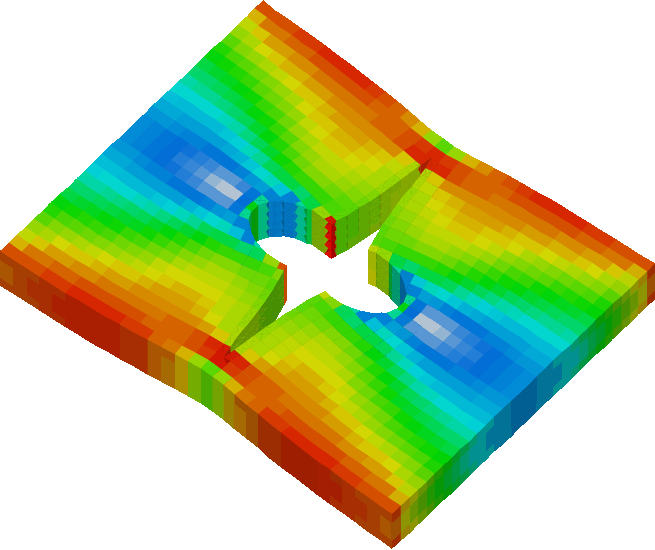
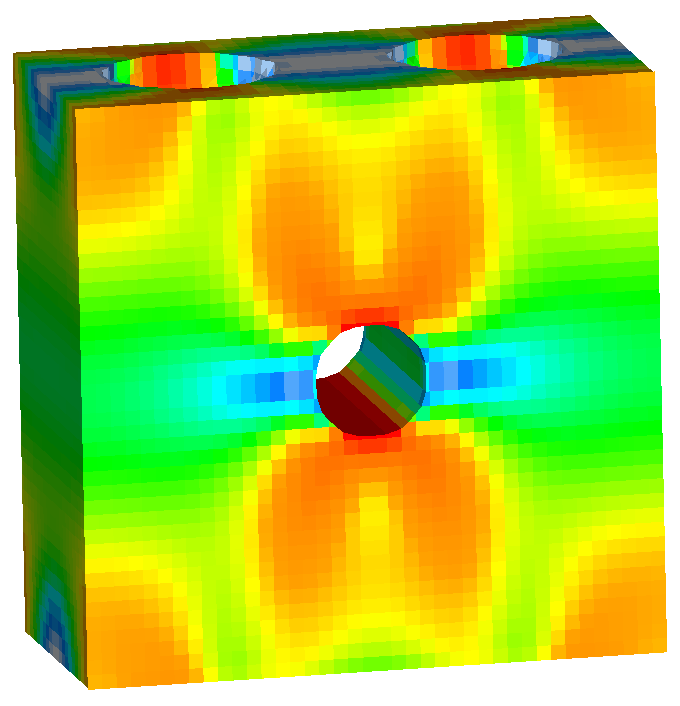
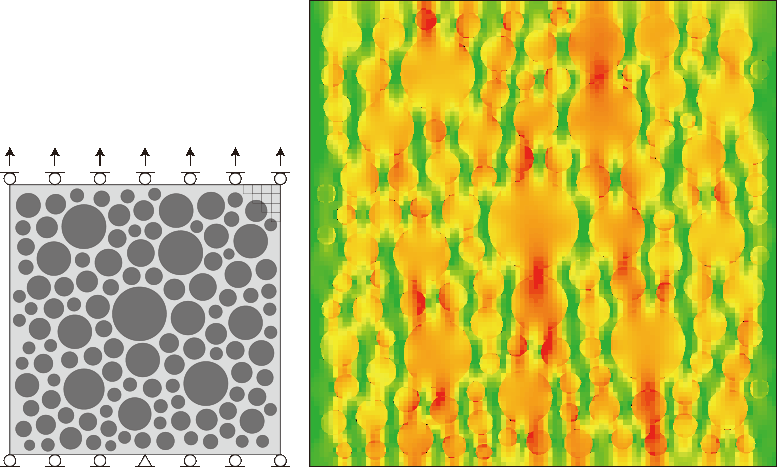
|
The finite cover method (FCM) for the analysis of heterogeneous solids have been developed. The FCM enables us to simulate heterogeneous solids using a regularly structured mesh independently of physical geometries. The crack propagation behavior can also be simulated by the FCM with a regularly structured mesh. The above numerical results demonstrate the capabilities of the FCM for the analysis of heterogeneous solids.
|
|
finite cover method, level set, regularly structured mesh, crack propagation, heterogeneous solids
|
|
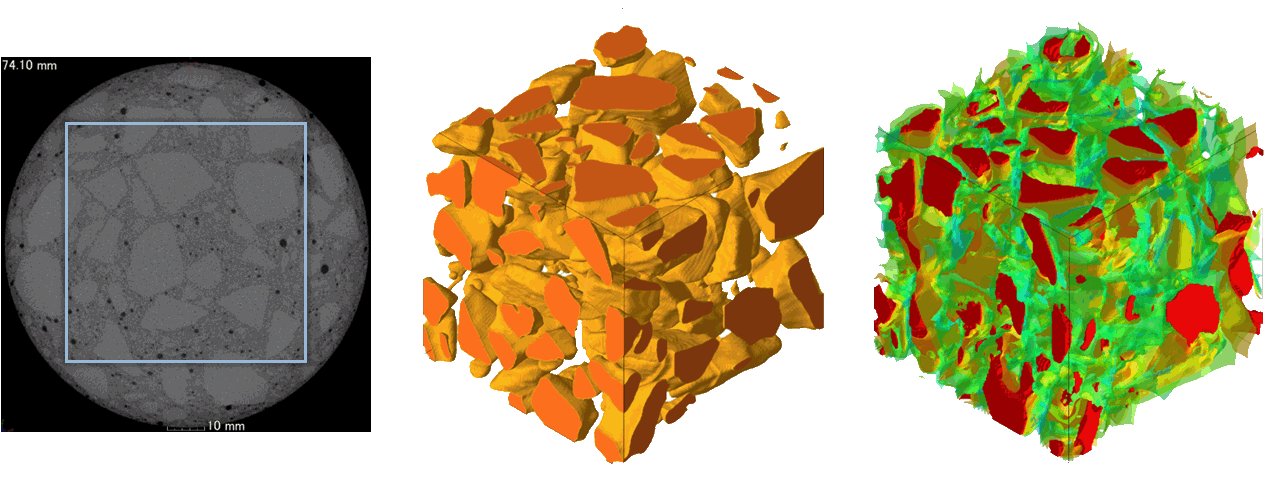
|
The extended voxel finite element method has been developed to simulate mechanical behavior of micro- or meso-structure of heterogeneous materials. The method consists of the extended finite element method and voxel finite element method, which allows the finite element analysis of heterogeneous materials using a voxel mesh generated independently of physical geometries. The above numerical result shows the stress distribution of concrete's meso-structure composed of mortar and coarse aggregates.
|
|
extended voxel finite element method, level set, enrichment, 3D meso-structure, concrete
|
|
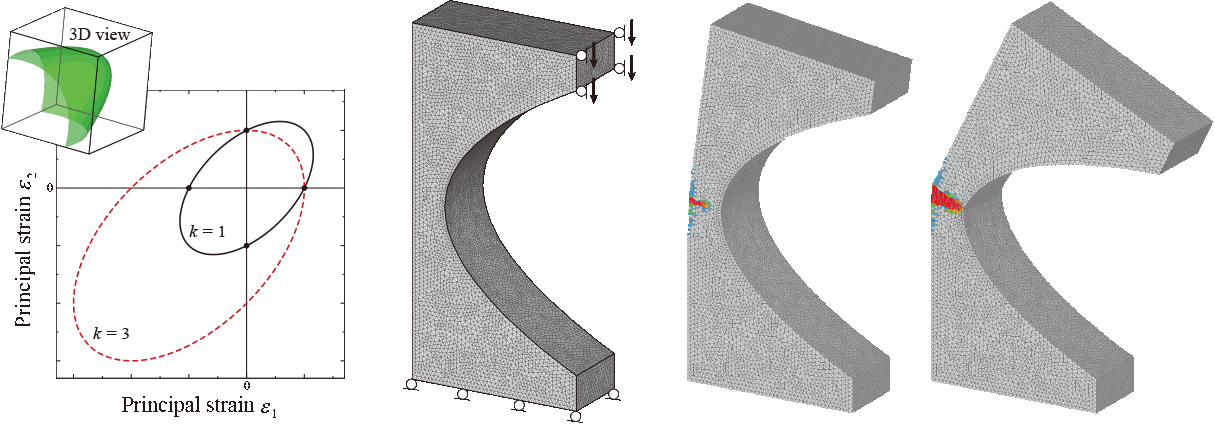
|
A damage model based on fracture mechanics of quasi-brittle materials has been proposed. The damage model can be used for the simulation of crack growth in quasi-brittle materials such as concrete. The crack behavior obtained by the damage model presents little dependence of mesh size. Good agreements are also found between the numerical and experimental results.
|
|
damage model, fracture mechanics, cohesive crack growth, quasi-brittle materials
|
|
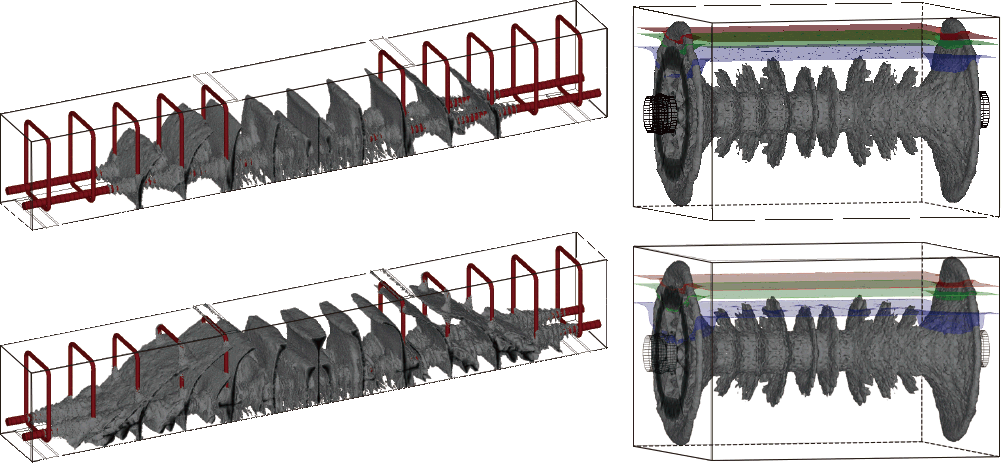
|
A method of simulating cohesive fracture behavior of reinforced concrete has been developed. The method consists of the damage model for concrete and the plasticity model for steel, which is incorporated with the finite element analysis. The upper left result shows that the 3D geometry and distribution of cracks in reinforced concrete, which agrees with experimental results, can be simulated. To simulate the chloride penetration in concrete, mass transfer analysis of chloride ions was combined with the crack propagation analysis with the damage model. The upper right result shows the distribution of chloride ion along with the internal cracks in concrete.
|
|
damage model, cohesive fracture, plasticity, 3D fracture simulation, reinforced concrete
|
|